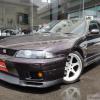Haltech Ps2000
Announcements
-
Similar Content
-
Latest Posts
-
By Dose Pipe Sutututu · Posted
Highlight that row, and a bit of trial and error. Try reducing it by 25% and see if it starts, if not, go the other way. On the newer Kebabtechs that table is in VE which makes it so much easier to calibrate. -
That's the one I have in my R32. There isn't a bigger battery that will fit an R32.
-
Not sure what you mean haha. That one doesn't fit mine but when I get sick of my one I'll get a standard one. I just gotta find a way to make it fit cause some shit is in the way.
-
https://www.supercheapauto.com.au/p/century-century-ultra-hi-performance-4wd-battery-ns70x-mf/602477.html MF for Muthaf*kka
-
Small update took it to an auto electrician and said all was normal, the power draw was normal and it was a bit of everything but nothing to concern with. Apparently my battery is ok, but because it's a smaller size battery instead of the oem size one, it might cause me issues. Looks like if there is a solution here I might need to upgrade to a bigger battery.
-





Recommended Posts
Create an account or sign in to comment
You need to be a member in order to leave a comment
Create an account
Sign up for a new account in our community. It's easy!
Register a new accountSign in
Already have an account? Sign in here.
Sign In Now